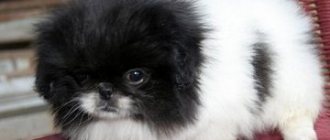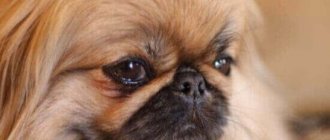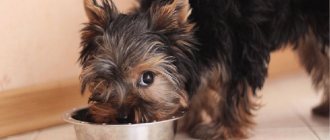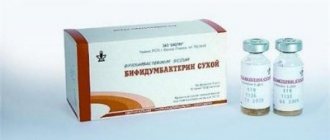Any owner is concerned with the question of how to structure a pet’s diet in such a way as to avoid most health problems in the future. The principles of feeding dogs are the same, but to feed a Jack Russell, you need to observe your own nuances: take into account the propensity for diseases, food allergies, temperament and other points. Let's figure out how to feed a Jack Russell pet: natural food or ready-made food, what menu a puppy and an adult dog need, what supplements to use.
Breed Features
The Jack Russell Terrier is a small breed, capable of digging holes and being used as a companion. Dog:
- active;
- strong;
- brave;
- frisky;
- energetic;
- without fear and aggression.
The weight of an adult dog rarely exceeds 6 kg, and its height is 30 cm. The elastic, muscular body has a harmonious, streamlined shape. The puppy grows quickly and by the age of 2 months he can gain 2 kg of weight. The growth rate depends on both feeding and genetic data. So, at 4 months a puppy can weigh 3 kg, or maybe 4-4.5 kg, and this will be normal.
For optimal weight gain, the puppy requires balanced feeding.
How to train to a diaper (toilet)
From the first days, you need to teach him to do his business using a special diaper or newspaper. To do this, at first you need to place a diaper or newspaper near the place allocated for the puppy. If the puppy made a puddle in another place, then blot them so that his smell remains and put this wet newspaper or diaper on the place you have chosen for the puppy's toilet. Closely monitor your puppy's behavior after he wakes up and after eating. Usually, before doing its business, the puppy looks for a place, spins around, and fusses. Without scaring the puppy, pick him up and place him on a diaper or newspaper, preventing him from running away from it. When the puppy manages, be sure to praise him. After some time, the puppy will get used to peeing on a diaper or newspaper. Gradually move the newspaper or diaper further from the puppy's place to a place convenient for you.
At what age can you walk a puppy?
You can go for a walk after vaccinations in 2-3 weeks. First, take the puppy out for 5 to 7 minutes, gradually increasing the walking time. It is advisable to walk on a leash!
How to properly wash a puppy?
You can wash the puppy for the first time only after vaccination in 2 weeks (if there is such a need). Wash the dog with herbal baby shampoo or shampoo designed specifically for puppies. Wash off the foam very carefully in the shower. Wipe dry with a towel, then dry the wool under a warm stream of air (hairdryer), then wrap it in a towel for 30 minutes until completely dry. When washing, insert cotton swabs coated with cream or Vaseline into your ears to prevent water from getting into your ears.
How to clean your Jack Russell puppy's ears?
Clean your ears once a week (the pinna and shallowly in the ear canal, 0.5 cm deep). Moisten cotton wool with special products (for cleaning dogs’ ears, alternating the composition: against ticks and otitis media). Brush until the cotton wool is clean. At the end of the procedure, you need to wipe your ear with a dry swab.
What to do to prevent your eyes from watering?
Rinse your eyes regularly with a cotton swab dipped in warm water, then wipe dry.
Grooming
Brush the coat 2-3 times a week. From a young age it is necessary to learn to comb your hair and perform all procedures on the table, because... in the future, during grooming and at shows, the dog should be able to stand calmly on it.
How to trim claws?
The claws of a puppy and an adult dog are trimmed as they grow using nail scissors or a special tool - a nail clipper. In the summer, as a rule, the claws wear down well on hard ground and asphalt, but in the winter they can grow strongly and break. Overgrown claws interfere with the dog’s movement, break off, change the gait, paw placement, and posture.
When does a Jack Russell Terrier's teeth change?
Permanent teeth (replaced after 7 months) should be brushed once a week with a special toothpaste for dogs or a piece of sour apple, and if they are missing, with odorless tooth powder or crushed chalk, avoiding the formation of yellow plaque or tartar. Second method – It is recommended to give a bone with cartilage once or twice a week.
Getting ready for the exhibition
Already a small puppy must be prepared for exhibitions. Stand it up regularly. In the ring, the dog should walk slightly ahead of the owner, stand calmly in an exterior stance, allow itself to be measured and show its teeth. All this should be taught to the puppy in advance.
Choosing a place and dishes
Jack Russell is very active. His playfulness sometimes goes off scale and then everything that is around flies around the room. Taking this feature into account, you need to competently approach the organization of the feeding area.
The basic requirements for the “dining room” are as follows:
- easy accessibility;
- seclusion (the animal should not be disturbed during the meal);
- equipped with an easy-to-clean surface.
If the apartment is small, the bowl can be placed in the kitchen, but in such a corner that it is freely accessible.
The place where food is taken should not be close to the animal’s place of rest or play. You should not constantly change the place where you feed. If the owner intends to feed it from his plate, that is his choice, but the dog must have a bowl.
The size of the feed container must correspond to two daily feed standards.
The bowl should be:
- heavy (she should not fly or fidget);
- easy to clean;
- made from food material.
A bowl of water should be nearby. Elevations and pedestals are not provided.
Briefly about the main thing
- Jack Russell Terriers are small, very energetic hunting dogs;
- A small terrier needs to be fed often, but in small portions;
- Overeating should not be allowed;
- The diet of a one-month-old puppy should contain at least 75% animal products and 25% plant products;
- For an adult dog on a natural diet, the ratio of foods of different origins is equal;
- Dry food is chosen from premium and super premium classes, strictly following the manufacturer’s recommendations;
- A number of products should not be given to your pet under any circumstances. This will help avoid major problems with his health.
Natural diet
The dog is a predatory, carnivorous animal. No matter how hard a person tries to remake nature and switch his diet to supposedly healthy and vitamin-rich cereals, vegetables and fruits, there is little sense in this. For a small breed, it is quite possible to choose a natural diet from available animal products.
Your dog's daily food intake should include:
- dairy products of varying degrees of fat content (milk, yogurt, kefir, cottage cheese, sour cream, whey);
- meat products (bones, meat trimmings, offal);
- fish (except for fish from inland waters);
- eggs.
Advantages
A natural diet allows you to control the quality and usefulness. Balance the nutrients yourself by diversifying your diet by introducing ingredients. In case of an allergy, the product can be easily detected and not allowed into the diet.
What to feed a puppy
Restless terriers, cute short-legged “motors”, became especially popular in our country after the film “The Mask”. Jack Russell Terriers were bred in England for burrow hunting. In our country, these are mainly companion dogs.
When getting a cute baby of this breed, the owner should understand that this is not an indoor decorative dog. Experienced dog breeders say that the owner of the breed even needs to be able to “exorcise the devil.” All Jack Russell Terrier puppies have irrepressible energy, a desire to dominate and are always in an active search for adventure.
Food should become a source of energy for him and provide the growing body with all the necessary substances.
The owner needs to decide on the type of food: natural or ready-made dry food. Every 60 days it is recommended to review the diet, introduce new foods into it, and change the portion size. By the age of six months, you can make a choice in favor of one type of food or another.
Feeding a puppy between the ages of 1 and 4 months . During this period, tissue formation, weight gain and bone skeleton formation occur. You will have to feed often, but in small portions. Serving size is 10% of the baby's weight.
You should start by feeding seven times a day. At 2 months you can reduce it up to six times, and at 3 months - up to five. However, you need to make sure that the puppy does not remain hungry.
During this period, the basis of the diet of proper feeding includes: meat products (beef, veal, lamb, some chicken), cereals (buckwheat, rice, oatmeal), vegetables and fruits, eggs. Porridge is cooked for the puppy, adding meat and vegetable oil (1 or 2 teaspoons). The food is given warm, in crushed form.
Milk should not be included in your puppy's diet; it can cause far more problems with the gastrointestinal tract than it is good for. Give cottage cheese, kefir, low-fat yogurt in small quantities.
By six months , growth slows down, you can slightly reduce the caloric intake of food. This can only be done with cereals; you cannot reduce the amount of meat. By the age of 1 year, the dog is transferred to two meals a day, choosing the type of feeding.
If the owner wants to make caring for his pet easier, he can choose ready-made dry food. Note that such a choice should be made only if the baby has already been fed this way by the breeder. Otherwise, a sudden change in diet can cause serious gastrointestinal upset.
When choosing food, follow the manufacturer's recommendations. The packaging should indicate that it is intended for babies (“puppy”, “junior”).
It would be right to choose premium food and higher: Purina, Acana , Royal Canin and others. Despite the fact that small pieces of ready-made food are produced for puppies, they can be soaked. This will make it easier for the puppy to eat. You should not use milk for these purposes.
The serving size is calculated based on the weight of the animal, taking into account the manufacturer's recommendations on the packaging.
Of course, ready-made food is much more convenient to use, but it can cause allergic reactions. The owner needs to carefully monitor the health of the pet.
Natural food will perfectly provide a growing body with all the necessary substances. The inconvenience for the owner is the need to figure out how to diversify the pet’s diet and buy additional vitamins and microelements.
We also performed a detailed analysis of the following feeds: Proplan, Monje, Dog Chow, Brit.
Ready-made feed
The manufacturer does its best to please the pet and its owner. Ready-made feed:
- varied;
- fragrant;
- comfortable;
- delicious (judging by the appetite of dogs).
In addition, pouring granules from a bag into a bowl, which you then don’t have to wash, is easy and simple. The huge shelf life allows you to purchase a “bag” once and solve all problems.
No matter what kind of advertising ready-made food is used, it is very difficult to look into its essence. Independent laboratory tests have repeatedly confirmed that they do not contain the nutrients, vitamins and minerals stated in the formulation (even the most expensive ones).
Feed, during the production process, is subject to high temperatures, therefore, devoid of biologically active substances and many non-heat-stable vitamins. Such food cannot be balanced.
Advantages
- fast;
- purely;
- simply and easily.
Flaws
- inability to control the composition;
- the presence of artificial ingredients that can cause allergies;
- inconsistency of labeling with laboratory examination indicators.
If food, which one should I choose?
In the first months of the dog’s life, it is recommended to soak the food. You need to choose a product package that says “Puppy” or “Junior”. After a week, you can add wet canned meat to the food.
When choosing a dry product, it is better to consult a veterinarian. Premium or super-premium food is suitable for the breed:
- Orjien;
- Artemis Maximal Dog;
- Acana;
- Royal Canin;
- Innova EVO;
- Canide.
They contain a high content of vitamins. If dry food predominates in the diet, do not forget about water. Since it swells in the stomach, a lack of fluid will lead to gastrointestinal diseases.
What do you feed your pet?
A lot of useful information on the RKF website
Dog shows on the zoo portal
Feeding regimen and norms by age
Each puppy age has its own characteristics, this should be taken into account.
Up to a month
At this age, the mother takes care of the puppies. Mammals are able to give their cub everything for successful healthy growth.
It is very important that the puppy receives mother's milk, especially in the first hours after birth. Clostral immunity (transmitted through mother's milk) is the basis of the puppy's immune status.
Mother's milk is a source of protein, sugar, fat and minerals for a puppy. If the circumstances are such that there is no mother and the puppy is small, then it is best to find a wet-nurse bitch. If this is not possible, then feeding should be done with milk substitutes, or at least infant formula.
As a last resort, cow's milk is used. It is taken into account that it contains less:
- fats (2-2.5 times);
- proteins;
- phosphorus.
To balance the food, you can add a little sugar and a little yolk of a raw chicken egg to the milk. The puppy looks for its mother's nipple up to 12 times a day. This rhythm is also maintained during artificial feeding.
The bitch feeds the puppies until they are 4-5 weeks old. Further, everything depends on the number of cubs and lactating ability. If the puppies are searching and the bitch runs away, this is a signal that you need to start feeding.
The first feeding may be sweetened milk. Next, the egg yolk is introduced into it. The next feeding can be done with cottage cheese, diluted milk or yogurt. You should not introduce everything in one day; it is better to do it gradually.
The initial dose is 10-20 ml. If the puppy is hungry, we do not increase the dose, but shorten the interval between feedings. The puppy should not starve or overeat, but the constant search for food is not beneficial to the growing body.
What food is suitable for a puppy?
By taking the puppy away from its mother and previous owners to a new, unfamiliar home, you expose the baby to serious stress. And in this difficult time, you need to pay special attention to nutrition. In order not to further increase the stress of the puppy, it is very important at first to provide him with the same nutrition as he had in his previous home (at the breeder or at the shelter where you got the dog from).
To do this, ask the breeder in detail about what kind of food the puppy received - whether it was specialized puppy food or natural food. Try to exactly reproduce the baby’s previous diet. If it was a special food, buy some quantities of this particular food. If it’s porridge, check the exact proportions of cereal, meat and other ingredients. The puppy should be fed exactly the same as in his previous home for at least a week.
If you are going to switch your puppy to a different diet, you can start doing this in a week. It must be remembered that the translation must be gradual! Initially, replace only one meal with the new food. After a few days, add another one, then another. So gradually, over the course of several weeks, you will accustom your baby to a new diet.
Vitamins and supplements
Vitamin preparations are medicinal substances. If there are no signs of vitamin deficiency, the puppy is energetic, the quality of the coat and mucous membrane is good, then there is no point in introducing synthetic additives into the diet.
If any pathology occurs, a comprehensive examination is necessary. You cannot use vitamin without a diagnosis - it will delay time and will not give the expected effect.
Advantages and disadvantages
In addition to the fact that natural food is varied and does not get boring for the dog, it has a number of other advantages:
- the owner independently selects the products, monitoring their freshness and quality;
- the food contains no preservatives, artificial flavors, dyes or flavor enhancers;
- in case of an allergy to one of the products, it can easily be replaced with another;
- proteins, fiber, fats and carbohydrates included in a dog’s diet are of natural origin.
This type of nutrition also has some disadvantages.:
- Preparing food for a dog and preparing a balanced diet requires a lot of time;
- natural feeding involves additional intake of a vitamin-mineral complex;
- You need to cook for your dog every day.
In addition, natural feeding is problematic and inconvenient for those who are used to traveling with a pet.
Authorized Products
A balanced diet for Jack Russell Terriers with a natural diet should include:
- boiled or raw (in this case, necessarily pre-frozen) lean meat - beef, veal, chicken fillet;
- boiled offal - heart, liver, kidneys;
- boiled sea fish without bones;
- rice, oatmeal, buckwheat porridge;
- fermented milk products – cottage cheese, cream;
- raw vegetables - pumpkin, cauliflower, carrots, zucchini, beets;
- greenery.
To keep the coat beautiful and shiny, you should give your pet the yolk of a boiled egg several times a week.
Slightly sweet fruits, such as green apples, and low-fat cheese are suitable as treats.
What is strictly contraindicated
Products hazardous to the health of puppies and adult Jack Russell Terriers:
- broccoli, potatoes, legumes, onions, garlic, mushrooms, raw eggs, corn - their consumption in unlimited quantities can lead to anemia, gastrointestinal problems, as well as make the coat dull and the skin dry;
- citrus fruits, strawberries, millet – cause the development of allergic reactions;
- grapes and raisins - negatively affect kidney function;
- freshwater fish - its consumption, due to the large number of small bones, can cause wounds in the larynx and stomach;
- pork, smoked and sausage products are the cause of pancreatitis;
- tubular bones - injure the stomach;
- pickles, marinades, spicy and fried foods - lead to disturbances in blood composition.
You should also not give your dog popcorn, avocados, nuts, or pomegranates.
Chocolate is the most dangerous for Jack Russells - even a small amount depresses the heart in a few minutes, causing a heart attack, epileptic seizures or internal bleeding..
Water
A bowl of clean water should always be within reach of the puppy. Particular attention is paid to water if:
- the dog is fed ready-made pelleted food;
- has high physical activity.
The body's water balance is an important indicator of health. If you consume too little water, as well as if you consume too much, you should seek the help of a specialist.
Water in a Jack Russell puppy's diet
Water plays an important role in a dog's diet. When it comes to puppies who are constantly on the move, not drinking enough water poses too many risks. With a natural type of food, the puppy gets water from food, so it is reluctant to drink from a bowl.
Important! When kept on ready-made feed, the situation changes dramatically. A Jack Russell puppy should always have access to a drinking bowl with fresh water.
Prohibited Products
Man is an omnivore. A dog owner's food and pet food are not the same thing. Many foods are not food (even if the dog loves them).
Cannot be used as feed:
- sausages and smoked meats;
- raw fish and chicken;
- fried foods (steaks, cutlets);
- sauces (mayonnaise);
- very fatty meats in large quantities;
- flour products (including pasta).
Each organism is individual. Differences in metabolic rate and physical activity can significantly influence the composition of the diet. Observing the puppy, its manners, visiting the bowl, and “begging” for food will help increase or decrease the amount of food or balance its composition.
Basic rules for feeding a Jack Russell Terrier
When calculating the diet for a Jack Russell Terrier , they take as a basis products containing animal protein, and use a variety of vegetables and cereals to supplement it. It is partially allowed to replace vegetables with permitted types of fruit, supplementing natural nutrition with a small amount of glucose. The ratio of protein components, vegetables and grains for an adult animal should be 2:1:1. All ingredients are boiled, then crushed, and supplemented with vitamins if necessary. The morning portion of food for the animal is made as liquid as possible.
Types of products, combination of proteins and carbohydrates, frequency of meals are calculated taking into account the age of the animal.
It is advisable to determine for yourself in the first year what you will feed your Jack Russell Terrier: store-bought food or home-made food. It is strictly forbidden to use different feeding options - a mixed diet will very quickly lead to malfunctions of the body, allergic reactions, overdose of vitamins, as well as other unpleasant consequences.
If the basis of your dog’s diet is commercial food, you should give preference to premium or super class brands. Unbalanced, cheap pelleted diets pose a health hazard.
Moderate amounts of food should be offered, completely eliminating the possibility of overeating. Overfeeding is fraught with liver diseases and gastrointestinal disorders.











